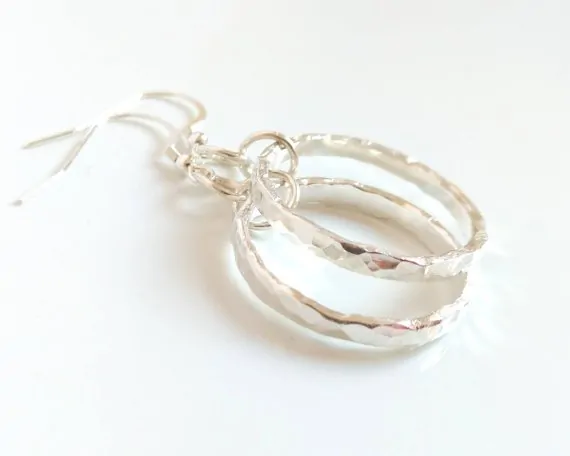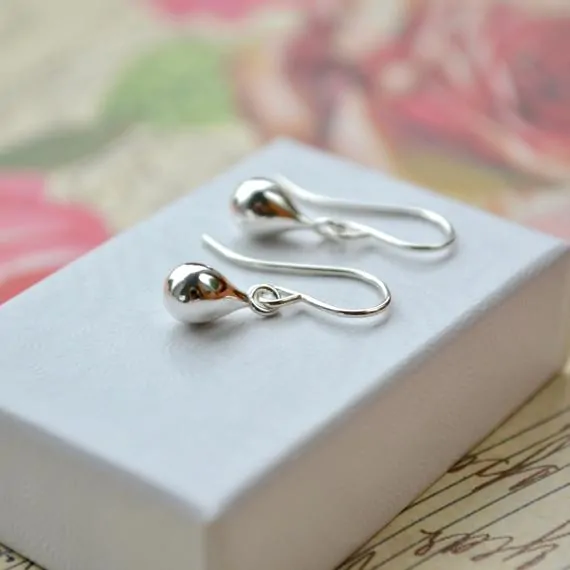
Table of Contents
This is a question that many people with a sensitivity to nickel ask but there’s conflicting information out there. Some say that sterling silver has only trace elements of nickel and can’t cause allergies, whereas others say to steer clear of sterling silver. If you have skin reactions when you wear sterling silver, it’s important to know whether or not your silver has nickel.
What’s a Nickel Allergy?
According to Walk-In Dermatology, up to 15% of the population have a silver allergy, which is a form of hypersensitivity caused by a disorder of the immune system. However, most such metal sensitivities are actually caused by an allergy to nickel and occurs when nickel in your silver comes into contact with your skin. This can vary in severity depending on the person, ranging from slight itchiness to pus-filled infections requiring medical attention.
Most people with nickel allergies experience irritation or discomfort around their wrists, ears and sometimes neck. Pierced ears are especially susceptible to irritation, and can result in infections if the earholes get affected. Necklaces containing nickel can sometimes leave rashes around the neck.
Does Pure Silver Cause Allergies?

The thing to note is that silver itself doesn’t cause allergies. Pure silver, also known as fine silver, refers to silver that is 99.9% pure. It is hypoallergenic and doesn’t cause irritations. So, if you are extremely sensitive to nickel this is an excellent option for you. The problem with pure silver is that it’s such a soft, malleable metal, and can easily lose shape. This is why it’s rarely used in jewelry-making – you’ll typically only find earrings made with pure silver.
Because of how soft pure silver is, it’s often combined with other metals to add strength and durability and to make it possible to use when making jewelry. Silver alloyed with other metals is known as sterling silver.
Does Sterling Silver Have Nickel?

Sterling silver is 92.5% pure silver with the other 7.5% of the alloy made up of different metals, typically copper. Reputable jewelers use copper, which is also a non-allergenic metal. In the US, nickel is rarely used in sterling silver alloys. However, nickel is commonly used overseas because it’s inexpensive and ideal for mass produced costume jewelry.
However, sometimes nickel is used in the alloy to add strength and color. When people say that they’ve got allergies to sterling silver, it’s more likely that the allergy is to the nickel in the silver rather than to the silver itself. Always check with your jeweler if the jewelry you’re buying contains nickel, and purchase from a reputable retailer.
We’ve covered nickel allergies in more detail in our article on the topic. Check it here: What is Nickel Jewelry and Why You Should Avoid It
If you want to test sterling silver jewelry to see if it contains nickel, you can try using a nickel test kit. Check out our guide on how to use one: What’s a Nickel Test Kit and How Do I Use It?
Tips to Wearing Sterling Silver with Nickel Safely
If you already have sterling silver jewelry that causes reactions, but you aren’t quite ready to get rid of them yet, you can try coating the sections that come into contact with your skin with clear nail polish or a professional jewelry sealant, like this one, that prevents allergies.
You can also try applying petroleum jelly on the sterling silver to act as a buffer between your skin and the metal. This will need to be reapplied every several hours but it works well if you’re afraid of breaking out in a rash.
Wrapping Up
In short, sterling silver is usually quite safe for most people as nickel isn’t always used in alloys. However, if you have severe reactions to nickel, check with your jeweler before you buy. If you’re experiencing irritation when you wear certain silver pieces, consider creating a buffer between the metal and your skin by coating it with a sealant.









